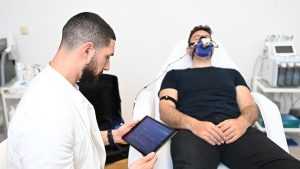Movement Economy – The mother of all endurance metrics
All of us athletes are obsessed with the term “movement economy,” and with good reason. But what does it mean? And how does it impact our performance?
Movement economy has to do with the amount of energy (i.e., calories) your body burns during exercise.
By measuring mechanical (i.e., watts for cycling, pace for running) and chemical (i.e., the calories you release by burning fats and carbohydrates) power simultaneously, we can accurately measure movement economy and determine the exercise intensity where your body works most efficiently.
A higher movement economy means your body burns fewer calories for a given level of exercise intensity (e.g., biking at 220 watts or running at six mph) and therefore requires less energy intake (i.e., supplementation of carbohydrates) and accumulates less fatigue.
Developing and maintaining a high movement economy is perhaps the most essential physiological attribute for every endurance athlete. 
The training intensity where you maximize your movement economy can vary vastly from one person to another. Therefore, it’s paramount to accurately measure your body’s movement economy profile in different exercise intensities to determine where you should train and race.
The PNOE metabolic analyzer provides gold-standard accuracy in determining your movement economy along with the training and nutrition plan your biology needs to optimize it.
The PNOĒ resting test takes about 10 minutes to complete, and all it requires is a short bout of exercise while wearing the PNOĒ mask, which collects and analyzes your breath.
Contact us to schedule your PNOĒ test now!
